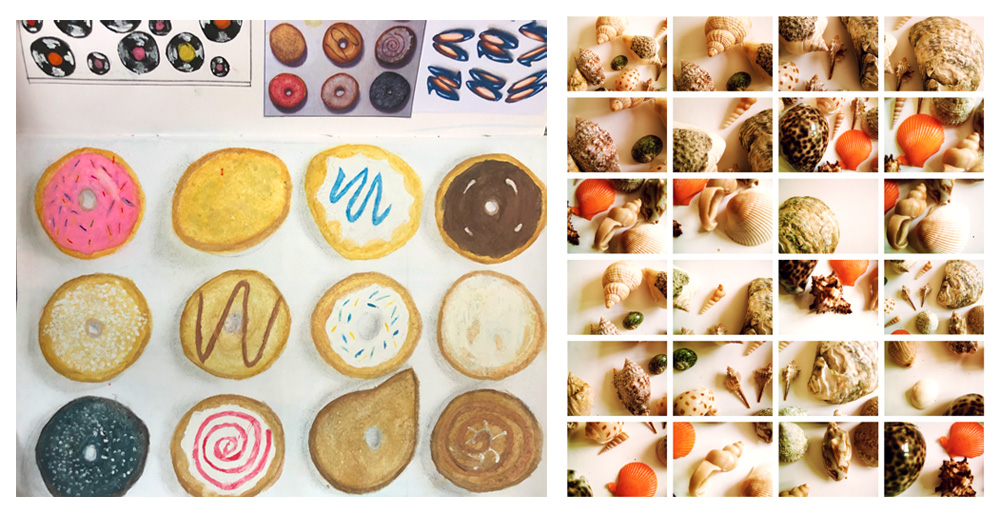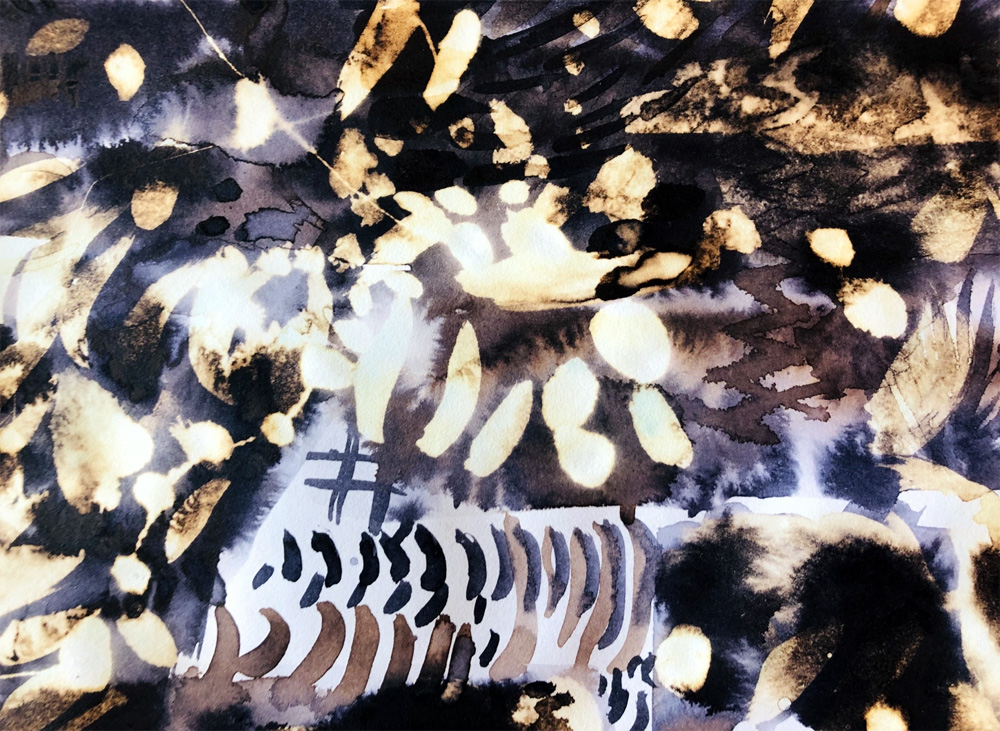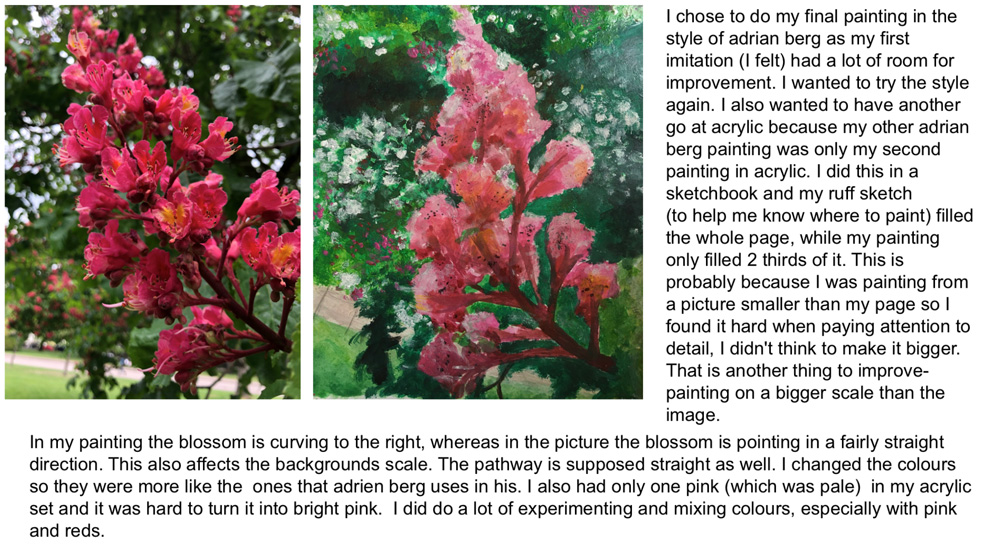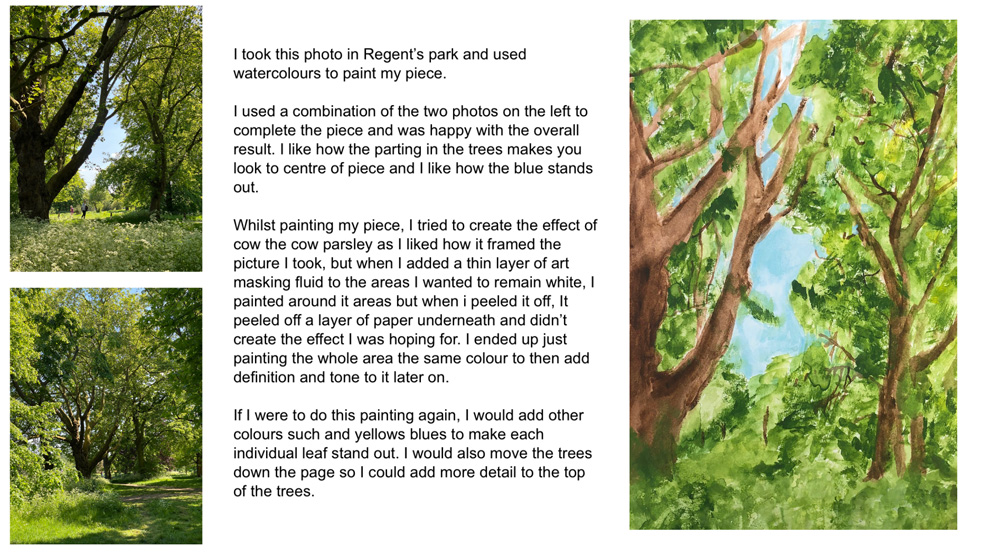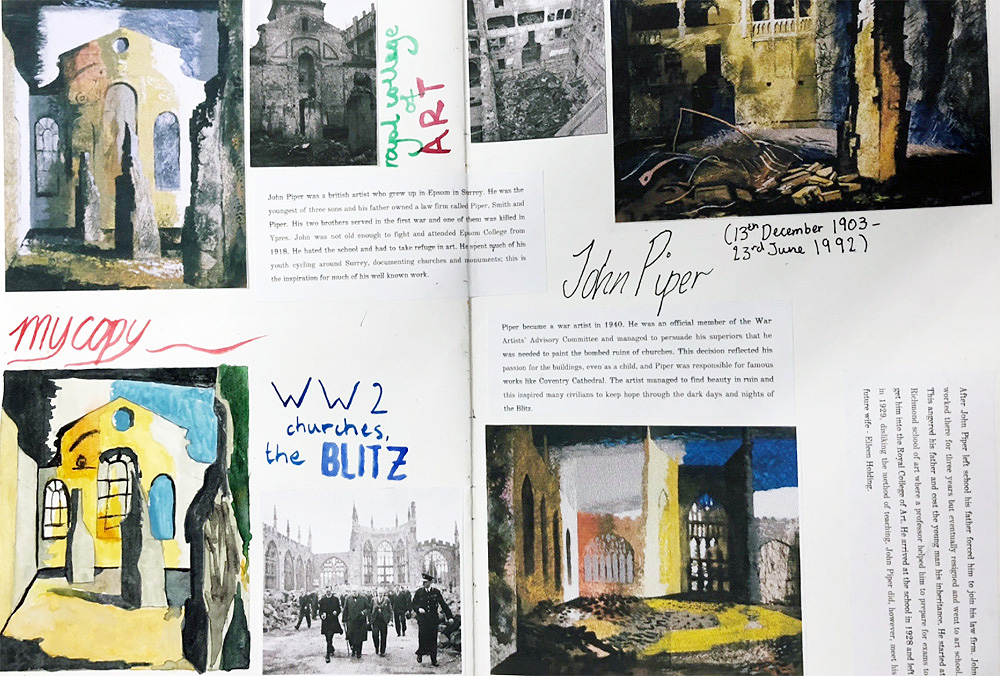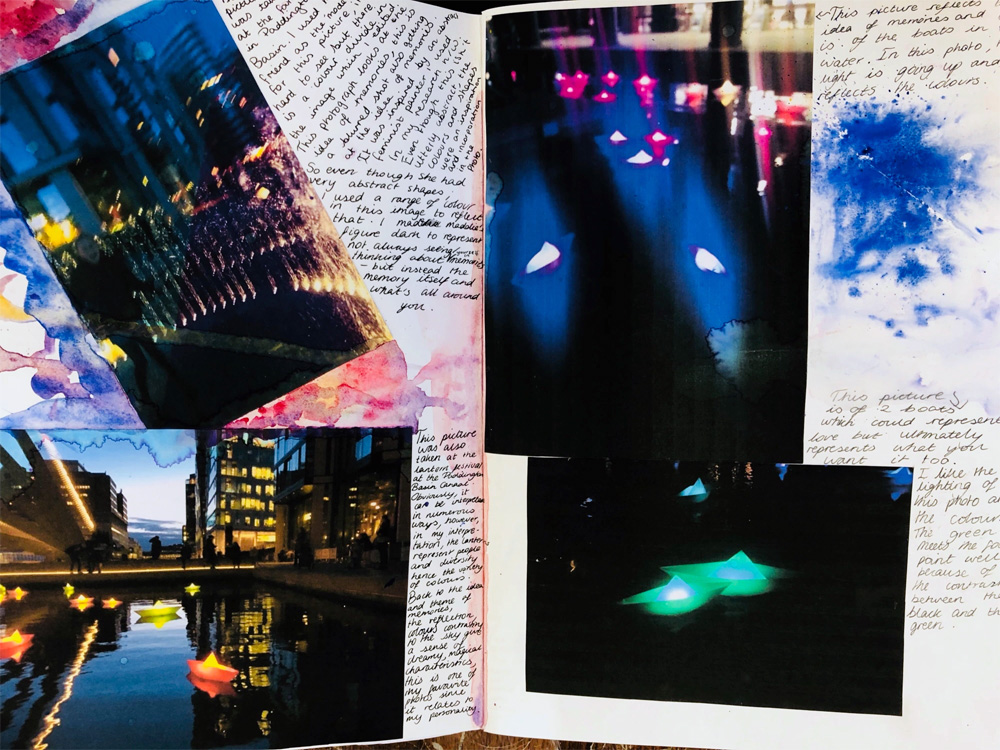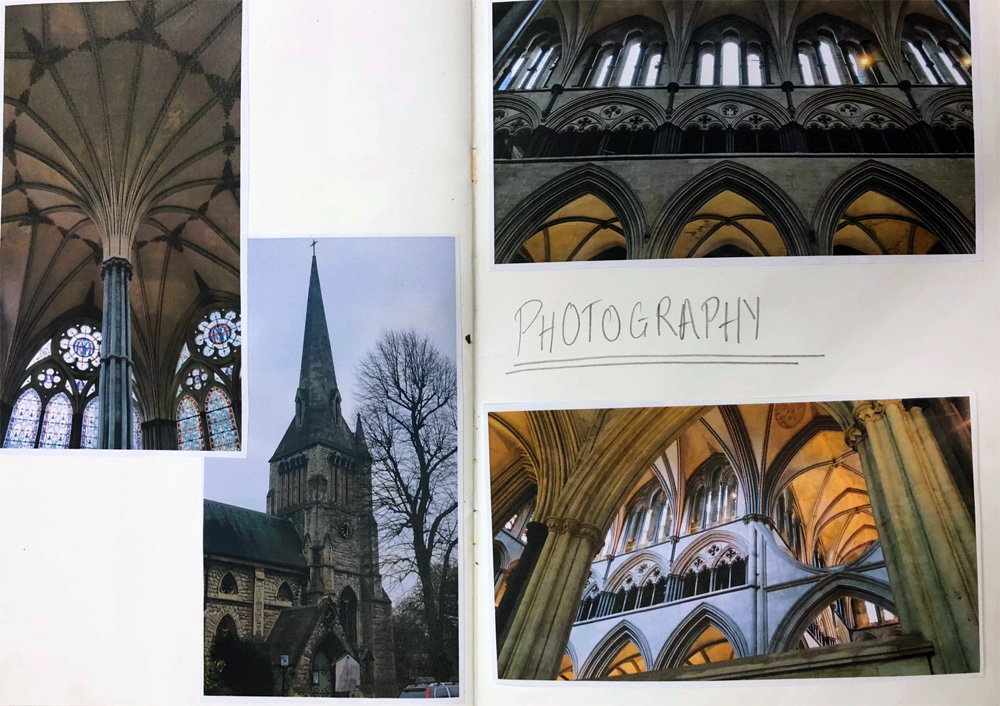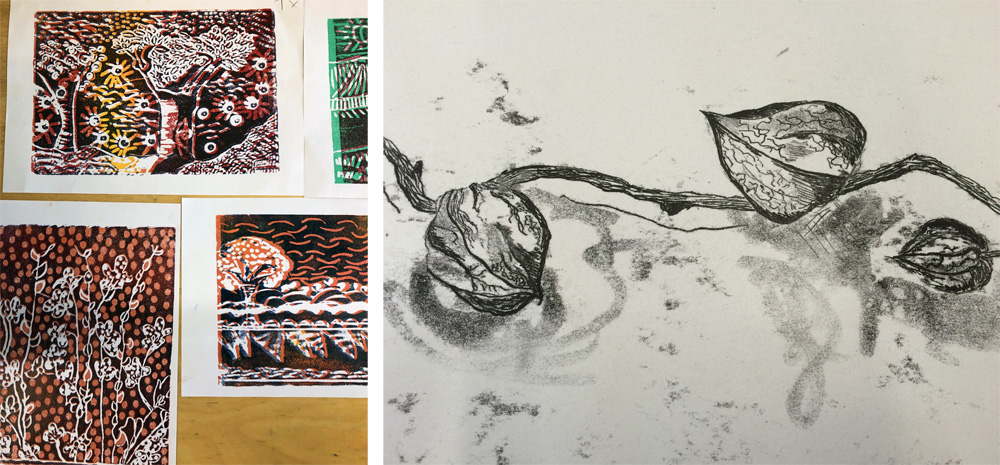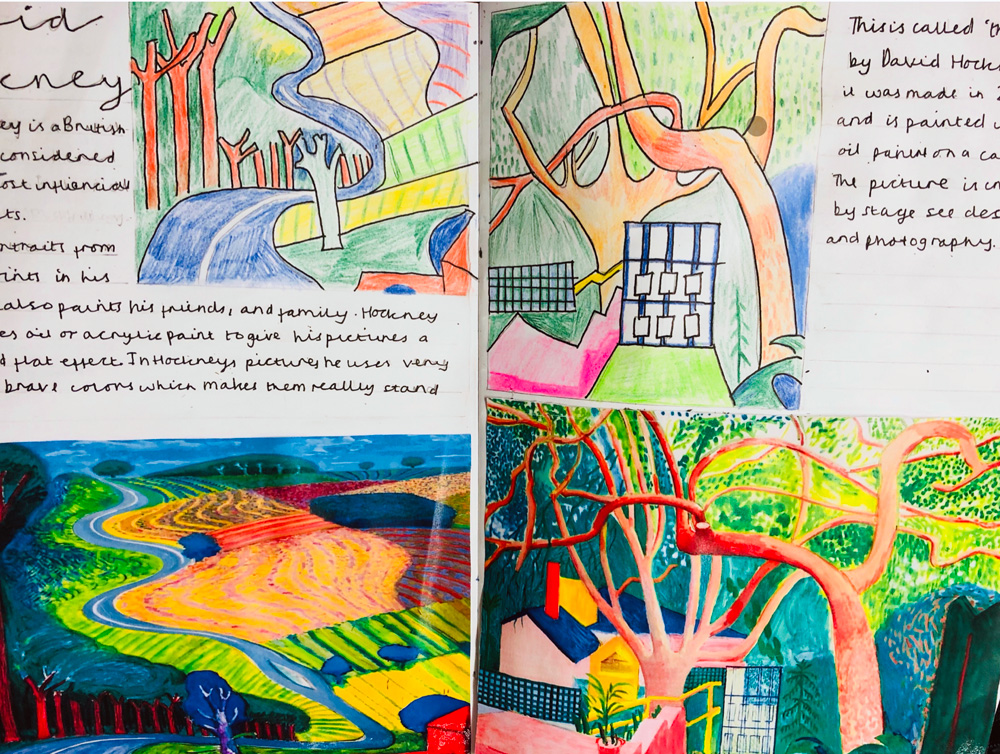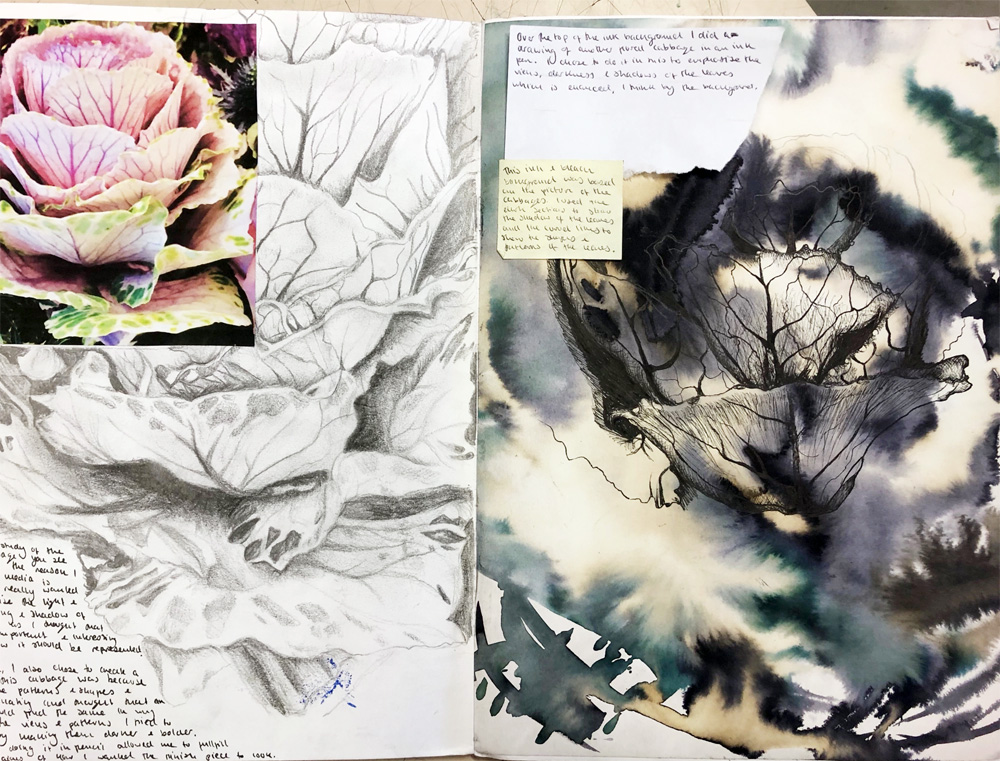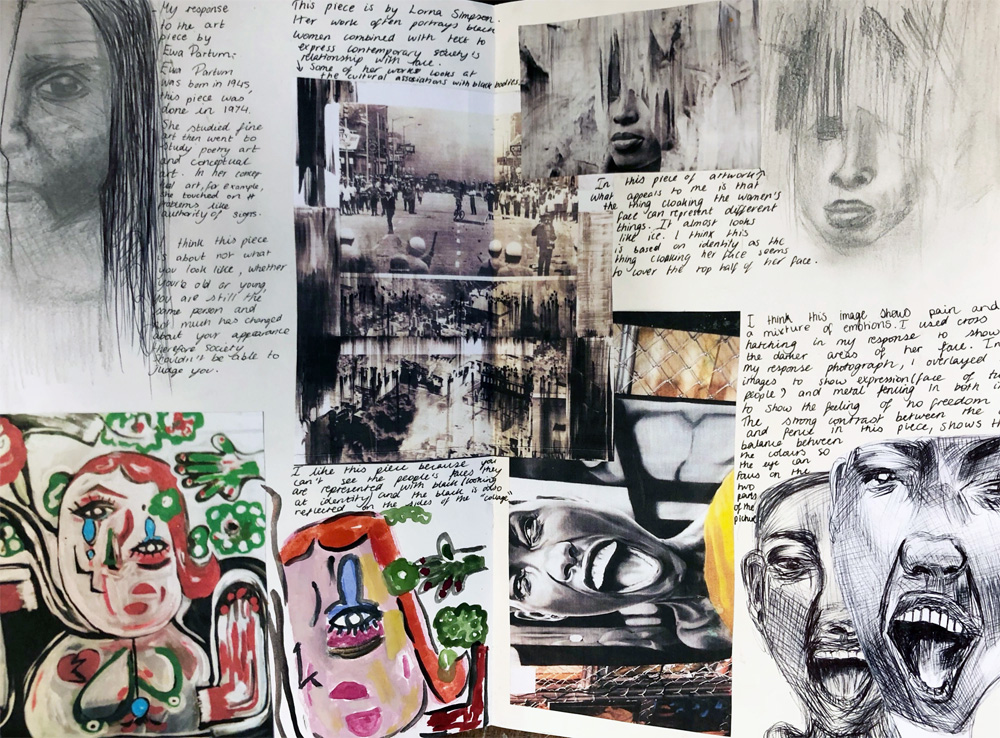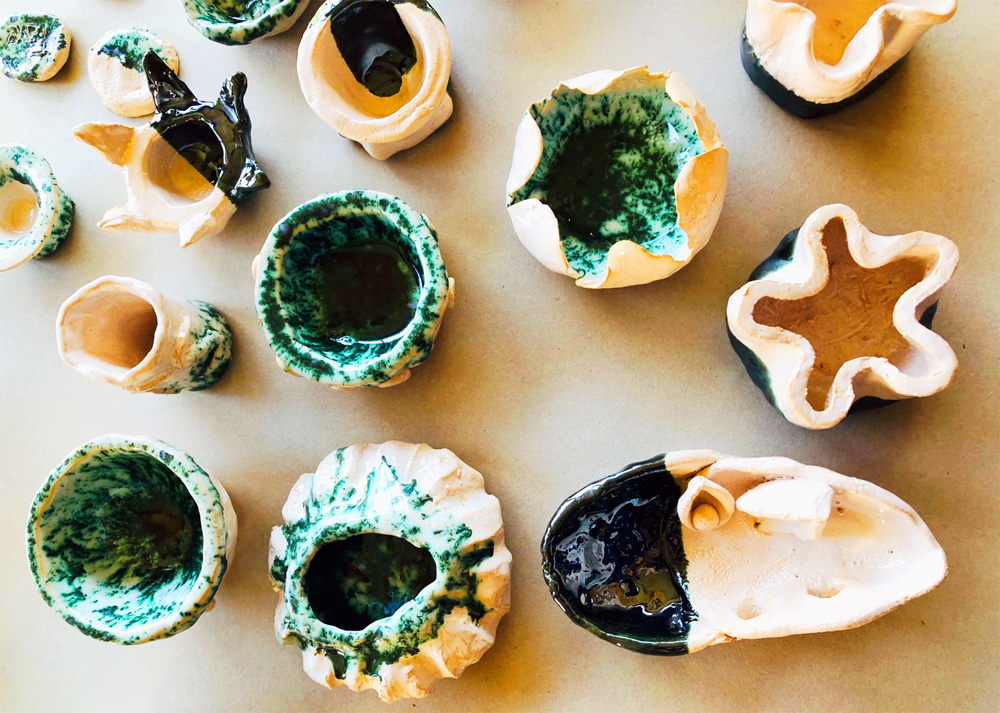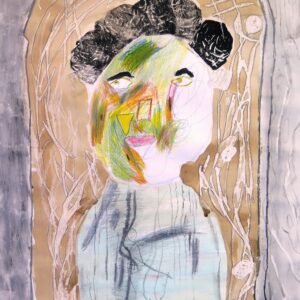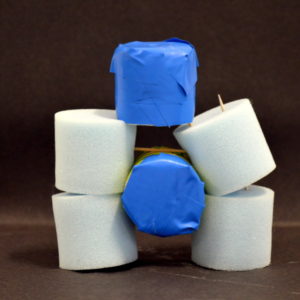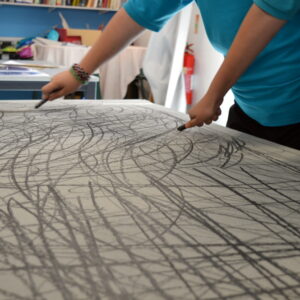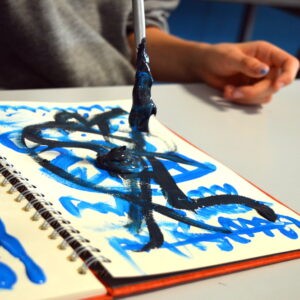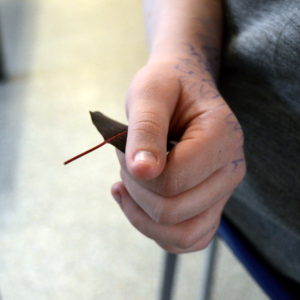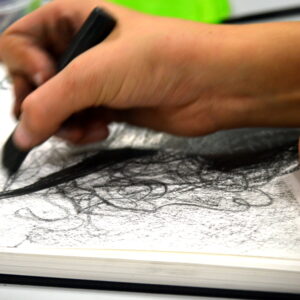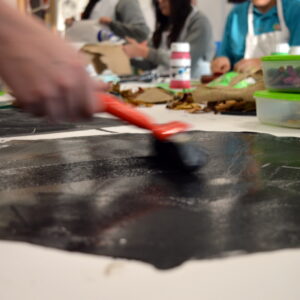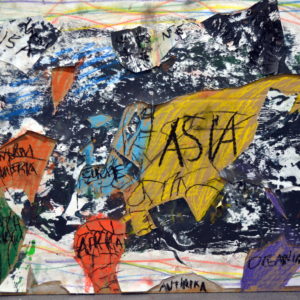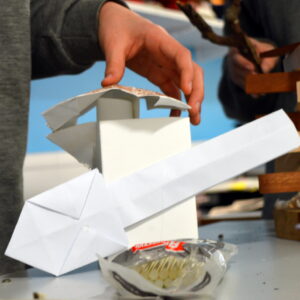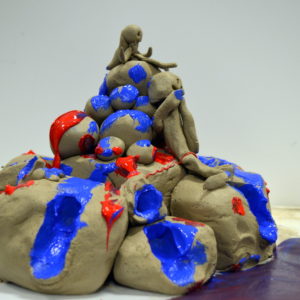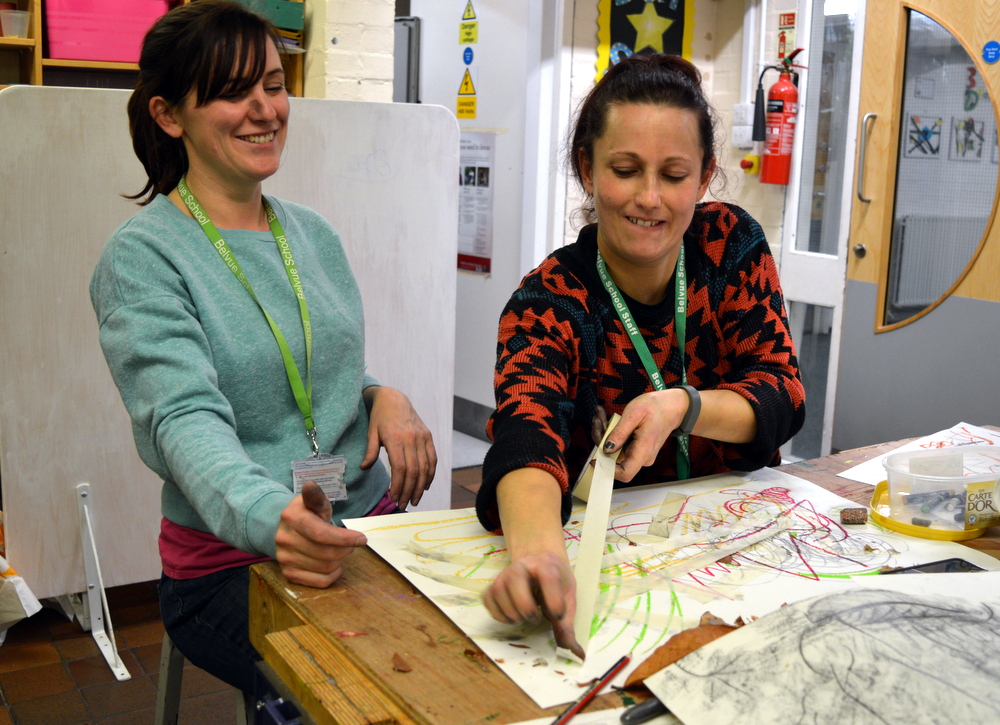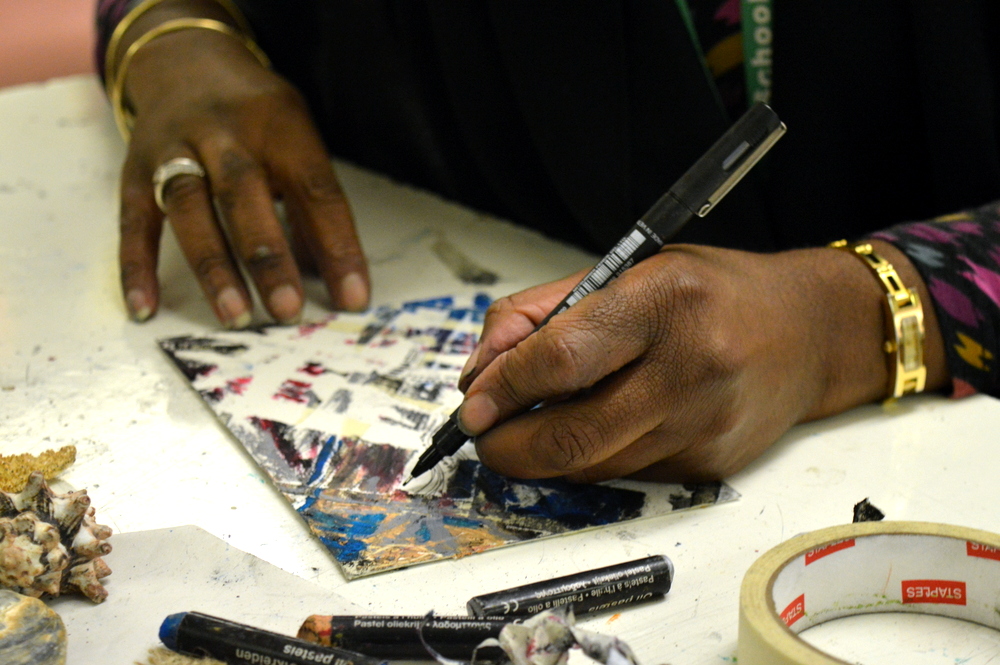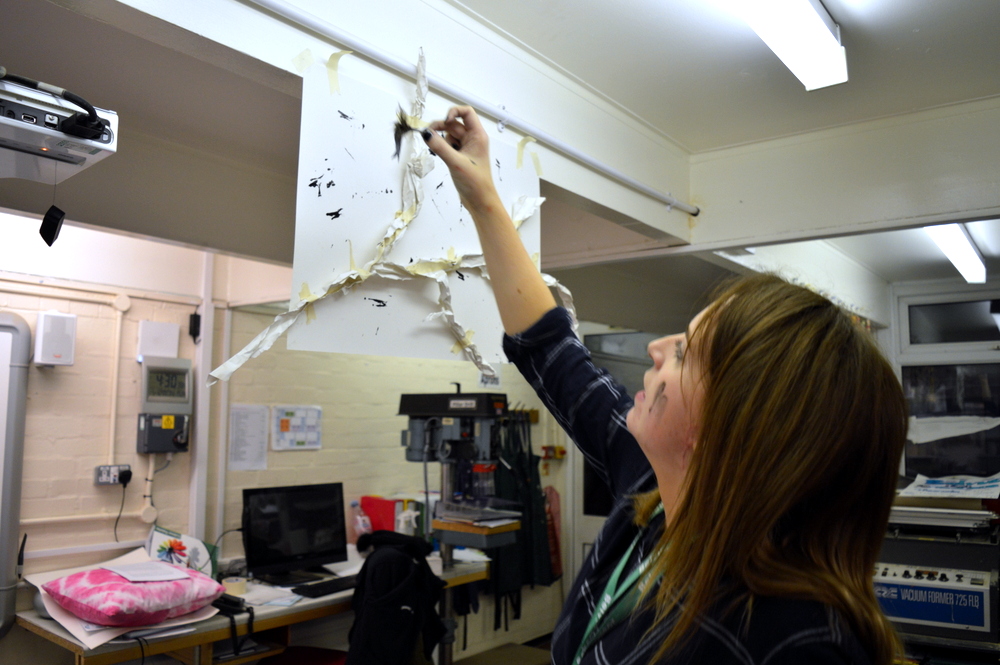By Stephanie Cubbin
Art educator and writer Stephanie Cubbin talks about raising aspirations in Key Stage Three Art, and shares advice and strategies for supporting students’ artistic development.
One of the many things I love about teaching is seeing students make or create something that they did not expect they were capable of. It’s all about high expectations and what I term ‘lifting the lid’. Often with teaching schemes of work, particularly in Key Stage Three, the artist and the work they are expected to make is set. Year 7 can make “drawings in the style of (add your own artist here)” and they will all make this. To ensure that we are maintaining a good classroom atmosphere, we have to make sure that students can all access the work, and so it is often tailored to the weaker end of the class. Students do well when they have completed the task and differentiation is all about ensuring there are extension tasks for the more able. However, the issue with this way of planning is that there are fewer opportunities for students to show exactly what they can do. Not free drawing lessons where they can draw whatever they choose, but a project with high expectations of research, photography, drawing, painting and experimentation.
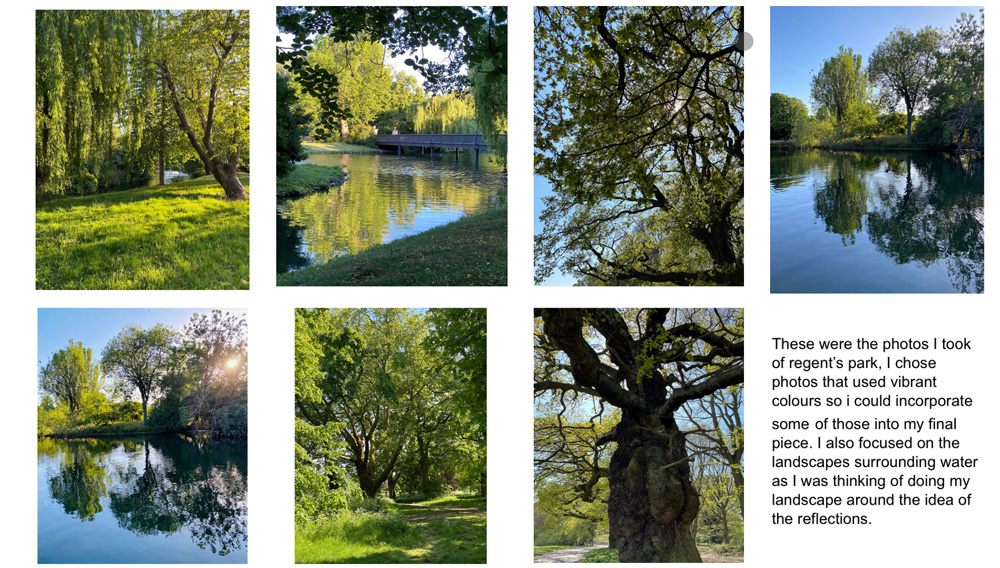
So instead I like to think about the Year 13 students, and what I would expect of them. I’d like my students at that stage in their art education to understand the creative process, the value of good resourcing and experimentation. I know that they find it more difficult to develop their own ideas, but it is easier with preparation. I want my students to be able to articulate their process and critically review their own work. Finally, I would like them to underpin their ideas with excellent research from a wide range of sources, including live ones.
All of this I ask of my KS3 students too. The curriculum is planned on a theory in which students repeat the same creative process and increase the level of demand for those Y13 qualities. I personally call it the ‘creative process’ and this process is the basis of any assessment, not one task or drawing, but the whole process (even if it is shortened) and feedback is about the process too. Students are asked to self-evaluate their creative process and annotate through their workbooks on how their art-work is directing their own ideas.
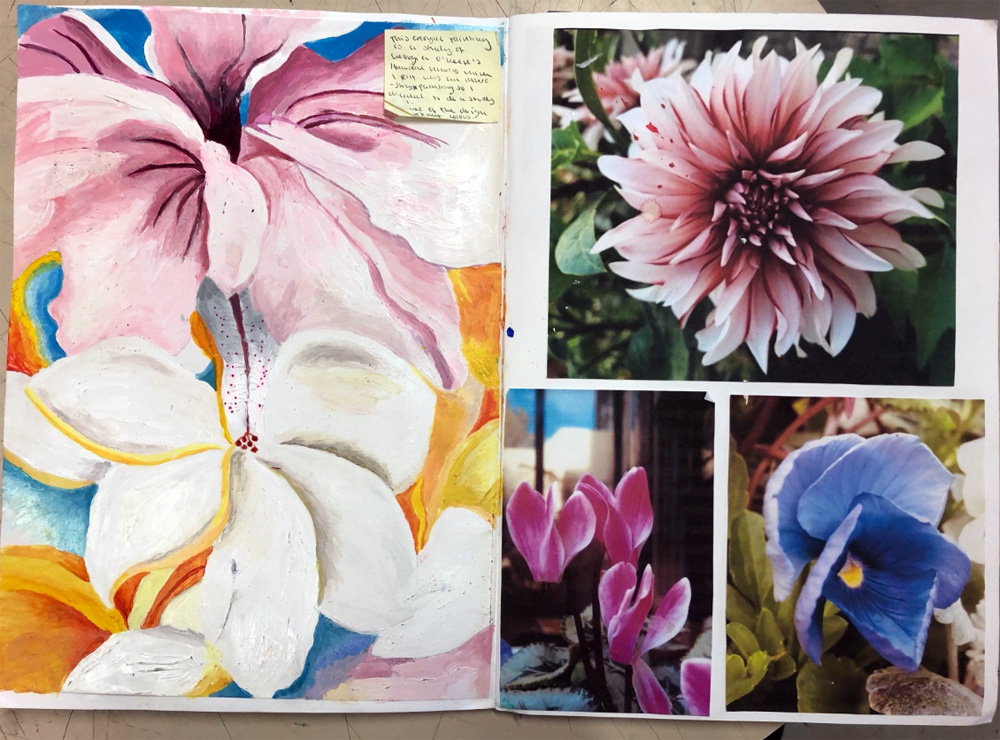
There are some things that I believe are fundamental to aspirational KS3 teaching:
1. Students should always have choices when it comes to artists – maybe they are choosing a piece from a choice of one artist’s work, or choosing between two or three artists. Either way, the students are responsible for their decision and need to articulate why these images are in their projects. What did they use to discriminate between all the works?
2. Students need to feel success. Many come from a primary education that feeds the idea that they can either draw (and are naturally artistic) or cannot draw (as they are not naturally gifted); it is not considered to be a learned skill. In addition to this, it is socially acceptable to be ‘bad’ at art (like Maths) and I have heard many adults say “don’t worry, I can’t draw a straight line” (Or “I was always bad at Maths”) – you never hear those people say “Don’t to worry – I can’t read”… Our first job is to make sure students feel success, so don’t make the entire curriculum about observational drawing, let them paint, cut, make, sculpt.
3. Some art teachers believe that allowing students to trace, use light pads, or work from photos is wrong… I disagree – we break down language for teaching, so why not drawing? Students can trace an object and then (in their drawing lesson) focus completely on the mark-making to show tone and shading. They spend time building a language of marks and when this is mastered, then we can tackle the observational aspect of drawing. The students feel confident enough to ‘try’ without immediately giving up. It’s all about manageable chunks.
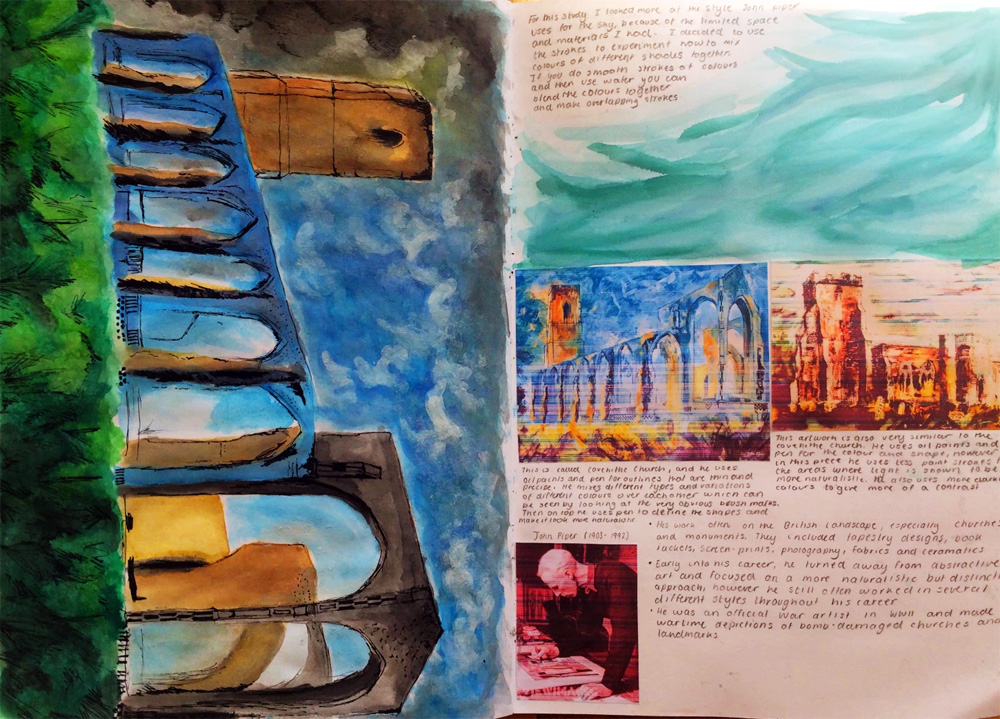
4. Students need to be given the opportunity to make their own connections, including Year 7. Many students have mobile phones with cameras, or can share with friends. They need to understand, as early as possible, the difference between taking snaps and composing a photograph inspired by an artist or photographer. Collecting your own resources is fundamental to making original artwork, and in KS3 art, students can make original and exciting artwork.
5. Students should be given the opportunity to exhibit their work – in corridors, online blogs, galleries or community spaces, or even on posters, invites and cards from the school. They start to see their making as a serious enterprise.
Students in each year group have an annual independent project, which we tie in with an exam-style outcome. They are given a theme related to the work they have been doing that year, and a series of tasks that they need to achieve. Students will be expected to decide what practical work they do in lessons, and what they should do at home for homework. The tasks include artist research with responses, photographs in response, drawings and paintings from life or photos, and then some development ideas to a final outcome. The outcome idea is their own choice and developed from their own work, this is often completed in exam-style lessons.
If students do not bring anything in, or engage with the unit, they are given something to draw by the department, in pencil in their book. This is part of their assessment, and will be part of their self-evaluation too. By not participating, or bringing in interesting homework, they are learning about their own dedication, or commitment to the subject. They are still drawing and being assessed. In our experience, most students are excited and want to demonstrate their enthusiasm and commitment to the exam. The negatives of a few students, not fully engaging, is deeply outweighed by the many who show enthusiasm, creativity and some surprising skill levels in this opportunity.
Our online blog helps as a way to share excellent practice and outcomes. This way students can see what their peers, and the other year groups are achieving. They might be inspired by the work that they see, and again drives the aspiration.
